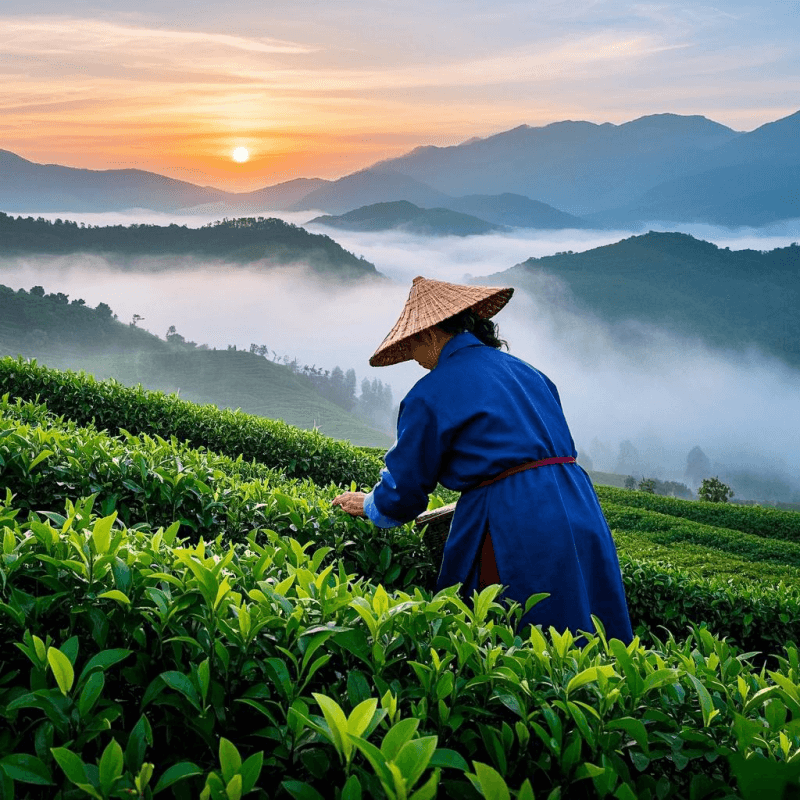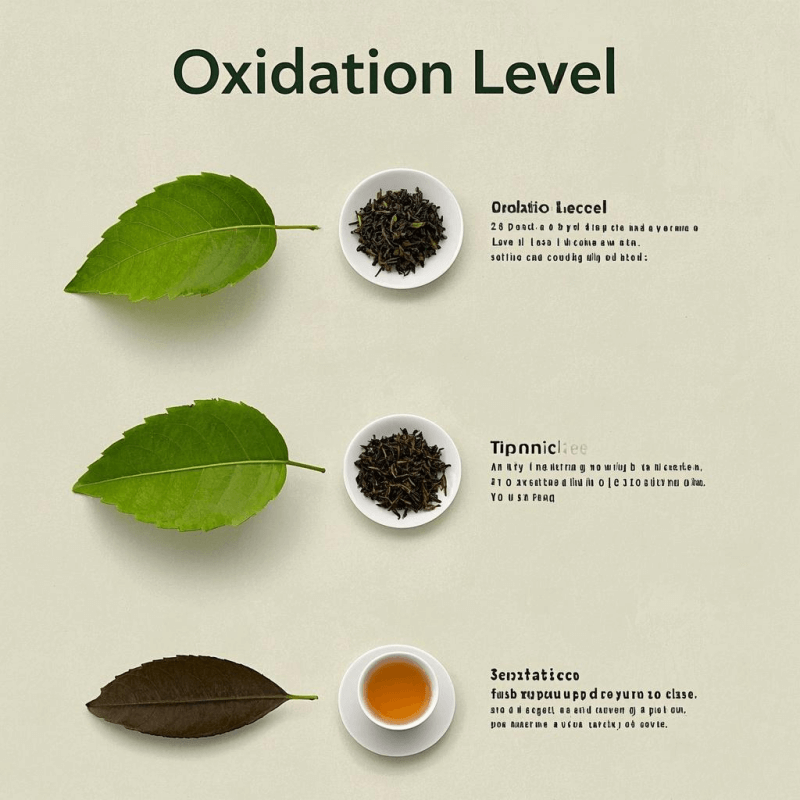What Type of Tea Is Oolong:

1. Introduction: Why Knowing What Type of Tea Is Oolong Matters
In the expansive and alluring world of tea—a beverage that has been intertwined with the cultures of civilizations for centuries—understanding what type of tea is oolong unlocks a world filled with intricate flavors and long-standing traditions. The International Tea Committee reports that the global sales of this distinctive semi-fermented Chinese tea specialty have witnessed a remarkable 25% increase over the past five years. This growth not only signals a rising appetite for unique tastes but also highlights the growing fascination with oolong tea, a beverage that elegantly bridges the gap between green and black tea in both its processing and flavor profile. Whether you’re a seasoned tea connoisseur or someone new to the world of tea, delving into what type of tea is oolong offers an immersive journey through history, culture, and the art of tea-making.
2. What Type of Tea Is Oolong? Basic Definition and Classification
So, what type of tea is oolong exactly? This exceptional beverage belongs to the Camellia sinensis plant family—the source of all true teas. Its defining characteristic is a semi-oxidation process, placing it in a unique middle ground between the minimally processed green tea and the fully oxidized black tea. With an oxidation level that can range from 10% to 70%, this particular tea presents an incredibly diverse spectrum of flavors, aromas, and appearances, earning it a distinct place in the tea world.
Originating in China over four centuries ago, oolong tea is rich in cultural significance. Traditional Chinese tea masters classify this tea based on various factors, including its origin, processing techniques, and leaf characteristics:
- Wuyi Rock Teas (e.g., Da Hong Pao) thrive in the mineral-rich soils of the Wuyi Mountains, offering bold, roasted profiles.
- Taiwanese High Mountain Teas (e.g., Alishan) grow at elevations above 1,000 meters, yielding delicate floral and fruity notes.
- Phoenix Dan Cong from Guangdong is celebrated for its “one bush, one flavor” philosophy, with aromas ranging from honey to orchid.
As Tea Culture Journal notes, these classifications serve as guides for tea enthusiasts, helping them explore the wide range of oolong tea varieties. To experience authenticity, discover premium oolong tea crafted by heritage artisans at https://yiheteas.com/product/oolong-tea/, where each blend reflects generations of expertise.
3. Oolong Tea’s Oxidation Level: Between Green and Black

The oxidation level is the key factor that defines what type of tea is oolong and sets it apart from other teas. Let’s break down the spectrum:
| Tea Type | Oxidation Level | Color | Flavor Profile | Caffeine Content |
| Green Tea | < 10% | Bright green | Fresh, grassy, vegetal | Moderate (20–45mg/cup) |
| Oolong Tea | 10–70% | Greenish-brown to dark brown | Floral, fruity, roasted, or nutty | Moderate to high (30–50mg/cup) |
| Black Tea | 80–100% | Dark brown/black | Malty, bold, sweet | High (40–70mg/cup) |
Lightly oxidized varieties like Tie Guan Yin (Iron Goddess of Mercy) retain the freshness of green tea with subtle orchid aromas, while heavily oxidized Wuyi Yancha (rock tea) develop deep, caramelized notes akin to black tea. This versatility is why oolong tea is often described as “a journey in a cup”—each sip can vary drastically based on oxidation.
4. How Oolong Tea Is Processed and What Makes It Unique
The production of oolong tea is a meticulous art that can take days to perfect, involving six core stages:
- Harvesting: Leaves are handpicked at dawn when amino acid levels are highest, ensuring optimal flavor.
- Withering: Spread on bamboo trays under the sun or in cool air to reduce moisture and activate enzymes.
- Tossing (Yao Qing): Gently tossed in bamboo baskets to bruise leaf edges, initiating oxidation and releasing aromatic compounds.
- Oxidation Control: Artisans monitor the process hourly, stopping oxidation at the desired stage via pan-frying (sha qing), which locks in flavor.
- Shaping: Leaves are rolled or twisted into signature forms, such as the tight curls of Tie Guan Yin or the loose leaves of Phoenix Dan Cong.
- Roasting/Aging: Some varieties undergo multiple roastings for depth (e.g., Da Hong Pao) or aging for complexity, a practice dating back to the Ming Dynasty.
This labor-intensive process explains why oolong tea is often referred to as “artisan tea”—each step is a blend of science and intuition, resulting in flavors that mass-produced teas cannot replicate.
5. Key Differences Between Oolong, Green, and Black Tea
While all three teas come from the same plant, their processing creates distinct identities:
- Green Tea: Focuses on preserving freshness through immediate heat treatment (e.g., pan-frying or steaming), which halts oxidation and retains chlorophyll.
- Black Tea: Emphasizes full oxidation for bold flavors, often paired with milk or sugar in Western cultures.
- Oolong Tea: Balances oxidation to create a middle ground, appealing to those who seek both the freshness of green tea and the depth of black tea.
A Healthline study highlights that oolong tea’s moderate oxidation may offer the best of both worlds nutritionally, with balanced levels of catechins (antioxidants) and theanine (relaxation-promoting amino acids).
6. Choosing the Right Oolong Tea for Your Taste and Needs
With hundreds of oolong tea varieties, here’s how to navigate the options:
For Beginners: Start with Light Oxidation
- Tie Guan Yin (Iron Goddess of Mercy): Creamy, floral, and approachable, with notes of ripe pear and gardenia. Ideal for those new to oolong tea.
- Alishan High Mountain Tea: Grown in Taiwan’s misty peaks, this tea offers bright, fruity flavors like green apple and honey, perfect for cold brewing.
For Flavor Adventurers: Explore Heavy Oxidation
- Da Hong Pao (Big Red Robe): A legendary Wuyi rock tea with a robust, smoky profile, complemented by hints of cinnamon and roasted chestnut. Pairs excellently with rich dishes like roasted meats.
- Phoenix Dan Cong “Mi Lan Xiang” (Honey Orchid Fragrance): Known for its complex aroma—a blend of honey, orchid, and almond—that evolves over multiple steeps.
For Health-Conscious Drinkers:
Opt for unroasted or lightly roasted oolong tea to maximize antioxidant content. Studies suggest regular consumption may support metabolism, heart health, and even skin elasticity due to its polyphenol content.
To enhance your brewing experience, brew your favorite oolong tea with authentic teaware from https://yiheteas.com/product/oolong-tea/, as the right vessel—such as a Yixing clay pot—can elevate the tea’s aroma and flavor.
7. Conclusion: Why Oolong Tea Is a Category of Its Own
In conclusion, oolong tea is more than just a beverage; it’s a testament to the art of balance. Its semi-oxidized nature, intricate processing, and diverse flavor profiles set it distinctly apart from green and black tea, making it a category in its own right. Understanding what type of tea is oolong allows us to appreciate the centuries of craftsmanship and cultural heritage encapsulated in every leaf.
Whether you’re sipping a lightly oxidized Taiwanese oolong on a quiet morning or savoring a roasted Wuyi rock tea after a meal, each cup offers a unique experience. To start your journey, explore our oolong tea collection rooted in Chinese tradition at https://yiheteas.com/product/oolong-tea/ and discover why oolong tea stands proudly between green and black—uniting the best of both worlds in a single sip.
Uncover what type of tea is oolong and discover its unique place between green and black tea. Explore oxidation, processing, and flavor diversity to find your perfect brew—click to explore now!
